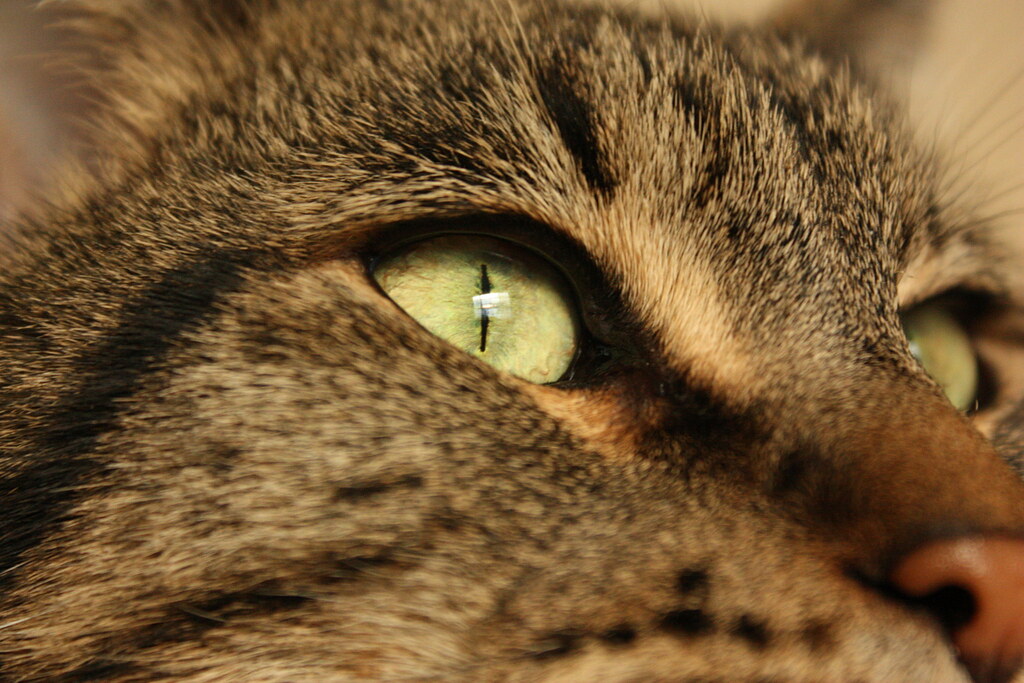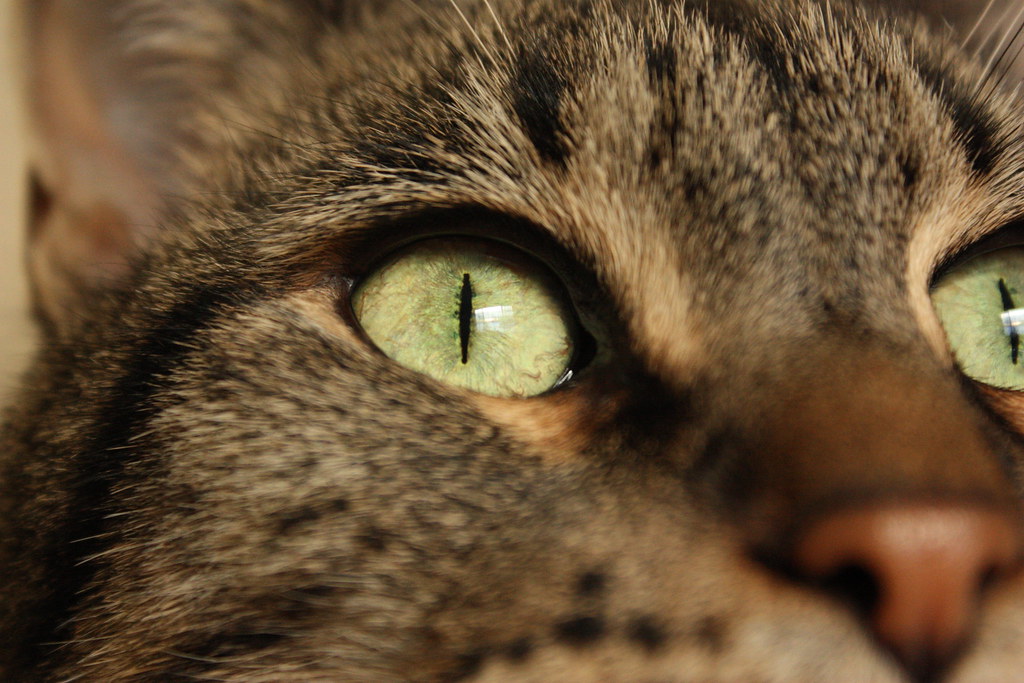Krillin Light
White Balance: Auto
This week's theme for our group 365 project is Eyes. For my first picture, I was trying to snap a picture of Krillin's, but it seemed on the monitor that the green of his iris and the warm colors in his fur just weren't as vivid as they should be. He almost looked monochrome!
Krillin Medium
White Balance: Daylight
So remembering how the wrong white balance made the night sky seem blue, I played around with the light setting. Since the sun was streaming through the windows, I set it to daylight. This is better, but still not as warm.
Krillin's True Colors
White Balance: Shade
Next, I set it to Shade. These are Krillin's true colors. Comparing them all together, you can see how drastic of a difference it made. So when it came to taking the final picture for today, the coloring was perfect. I love how Krillin's Eye ~ 31/365 turned out.
Krillin's Eye ~ 31/365
My familiarity with my camera and skills in using it are growing every day with this 365 project. So glad that I chose to join in the fun!




Half the fun of photography is the learning. It's amazing how white balance is critical to attain the correct colors.
ReplyDeleteKrillin must be patient. Our Winston becomes highly annoyed when I take the camera out and hides behind the couch.
The white balance problem explains so much about some of the pictures I've taken that don't quite look right. Like landscapes, big time. SO glad to figure this out.
ReplyDeleteAs for Krillin, I don't get him, but I love that he seems to love the camera. This is the second time he has literally posed for me without having to do anything to coax him. Not even treats!
At night, proper white balance can even be more trickier. There are many types of light sources, but in the evening urban setting it is typically either metal halide or high pressure sodium lights.
ReplyDeleteMetal Halide is the bright white light we see under gas station canopies. MH can have a high color rendering index; near true color rendering on what you see. Sometimes colors become richly saturated under MH lighting.
On the other hand, High Pressure Sodium has poor color rendering. The light from HPS is that hideously dingy buttery yellowish/orange light you see in parking lots where you can't distinguish a deep red car from a blue car or black car. The color spectrum under HPS runs together muddying the colors. Although, HPS can give you a warmer tone as opposed to the cooler tone of MH.
Tungsten setting for white balance can work, but not so much in mixed light sources.
So there it is, more about white balance and the correlation to differing light sources.
Wow, thanks so much for the information :) I have really been paying attention to the white balance lately, and I it has been making a difference. I appreciate the pointers :)
ReplyDelete